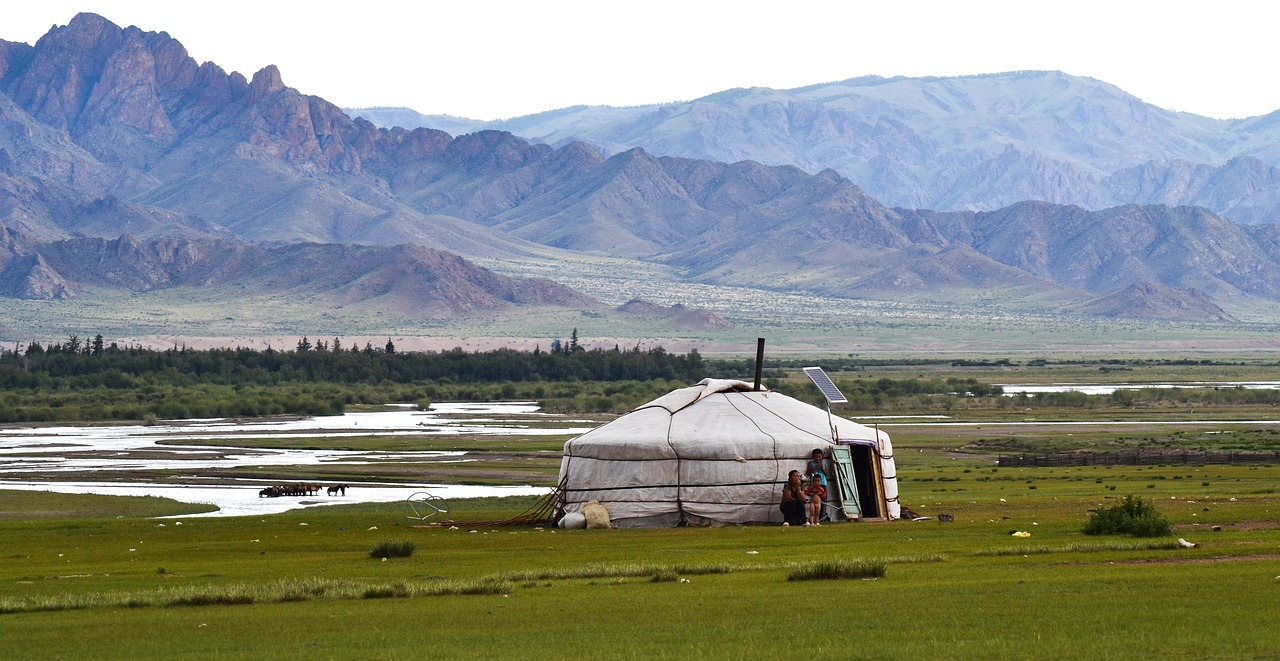We all have the moment when we need some privacy, some tranquility away from the busy lifestyle and just go back to simplicity. Mongolia is the perfect destination for this purpose offering some privacy and peace in their gers or yurts in the countryside with traditional nomadic hospitality. They have a very interesting history too, which goes back to the 3rd and 1st century BCE when the Huns lived in Central Asia. The Huns, who later occupied the Transylvanian basin (today Hungary), may have been their ancestors. However, there are lot of controversies around this topic and the origin of Huns. Another important name in their history is Genghis Khan, who established a united Mongolian empire containing of nomadic tribes and ruled much of China, Russia, Central Asia and the Middle East in the 13th century CE. The empire later collapsed and split, while the northern part of Mongolia was conquered by China and later by Bogd Khan. He managed to declare autonomy of the Chinese occupied area, and in 1924 the Mongolian People’s Republic was born.
Mongolia, a landlocked country, is nestled between China and Russia surrounded by rugged terrains and has large amount of remote flatland of diverse scenery. It is the home of Gobi Desert, which is located in the southern region of Mongolia and many salt lakes. In prehistoric times Mongolia was actually a sea and the Gobi Desert was covered with seawater. Later, due to the forming of the Himalayan Mountains, this sea dried up while many small lakes left behind. For example, Uuvs Nuur, is saltier than the ocean. The rainwater minerals dissolve in the lake, while the water evaporates leaving the salt behind. Some of the lakes are so salty that physically it cannot dissolve more salt into the water.
Their traditional accommodation is the gers or yurts have a unique design and they are ecologically friendly and very practical, not to mention that they are portable. Their structure consists of a wooden frame and felt walls made of sheep’s wool, which attached by horse, yak or camel hair straps. They have various places to get air in and out of the ger, for instance for their stove or to cool down the temperature inside. The Mongolian nomads moved their camp four times a year and it took two hours to set up or take down one. They needed three large animals to carry one big family yurt, while a traditional yurt could accommodate five to fifteen people. Their door was always faced to south so they could absorb the solar heat and light.
These eco conscious tents look very simple from outside but once you step in them it is a different world. They are divided into sections: for women and kitchen to the east, for men and their tools to the west and for guests to the north. In the middle you can find the stove with chimney, while they used various symbols and the five elements as decorations and patterns. These days some of the yurts are equipped with luxury items.
There are many activities to do in Mongolia such as horseback riding, exploring dinosaur’s bones in the Gobi Desert or playing anklebones or shagai. If you chose to search for the precious dinosaurs’ bones you must know that according to the locals when you find a bone to identify as dinosaur’s you have to lick the bone. If it sticks it is indeed a dinosaur’s one. So, be prepared to use your tongue and taste some real Mongolian dirt and sand. Shagai made of sheep anklebones and it is used as a dice. Each of the four sides represents a different animal: horse, camel, goat or sheep. They also use it for other games with cards, dominoes, chess and khorol including the five elements, Buddhist and zodiac symbols.
If you want to see some actions and real Mongolian sports you should go to a naadam, the Mongolian ancient games, which is held every year. It has three components: wrestling, archery and horse racing, and the biggest naadam is the one held in Ulaanbaator in the capital.
Also, once in Mongolia don’t forget to indulge in the gastronomy and its joys. Tsuivan is a Mongolian dish made of mutton, onions, potatos, carrots and noodles. You have to like meat when you are in Mongolia since every dish served of mutton, sheep, goat or yak. They also have some rather interesting drinks such as the koumiss or airag, a Mongolian fermented mare’s milk, and a milky tea called suutei tsai. Horhog is a baked dish with sheep meat and vegetables, while Boodog is the Mongolian version of BBQ. It is made by putting hot stone inside the meat, which means they cook it from the inside to the outside of the animal. Don’t be surprised if they give you one of the stones once the meat is done to rub your hands with. You can also find dumplings on the Mongolian menu, Buuz is stuffed with meat and vegetables.
My suggestion for accommodation is the Three Camel Lodge, which is part of the Unique Lodges of the World. They follow sustainable practices along with environmental and wildlife conservation programs. They offer the true nomadic lifestyle in their traditional gers combines with the Mongolian culture. It is truly an experience where there are no phones and no Internet.
P.S. – Want to go on a custom designed eco-friendly and sustainable tour anywhere in the world? I’m happy to book your full or partial trip! I’ll be offering you to my favorite hotels or resorts, restaurants, attractions, bars, and natural wonders you won’t find in any guidebook. If you’re interested, subscribe to my newsletter for updates or contact me now.
Want to share your tips and advice? Got questions? Please leave your comments below. Ask questions, get answers, meet people, and share your tips!


Leave a Reply